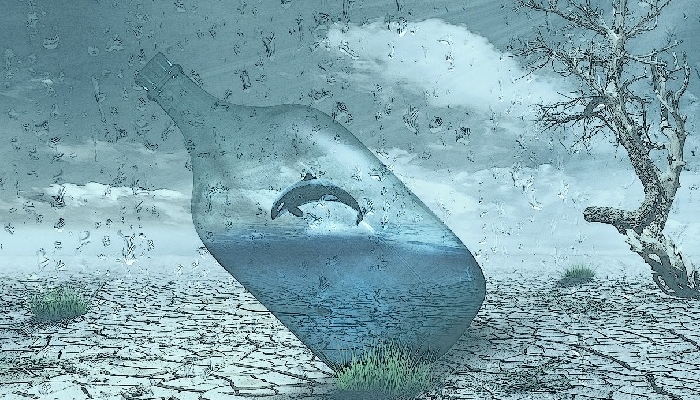Assessments about open channels applications

Control volume
The trust in control volume searching in to the hydrodinamic open system is the ideal goal to be achieved. In practice it is a processing as numerical solution compromise between Eulerian and Lagrangian coordinates. The modern instrumental solutions come in agreement with these methodologies.
The Eulerian approach is typical for measurements in to closed confined circuits where the reference is one static view field, for which the stream flows through out the bounderies edges of the measuring section.
The Lagrangian approach defines the reference system transporting it ideally on the single fluid particle elementary flow component, moving relative at to the measuring system, always stationary.
The reading point of the velocity vector, obtained by our immersion sensors, is about at middle-way between the two kinematics hypotheses, so adapting them to the need to know a discrete value of flow rate, or for example, how many volumes unit are passing through the section of the measure under consideration.
In fact in these applications is problematic and uncertain well estimate the measurement area, as well as identify a reliable index of velocity.
Instrumental solutions

The technological evolution of modern smart Doppler transmitters comes in handly, user friendly in open field flows, allowing the user to the proper research and application of the control volume most representative and correct, including the parameters (1) section area, (2) average velocity of the main fluid vein.

An inner calculator embedded in to our monitoring stations, processes the data in real-time flow rate, logging the totalized or integrated values with timing data acquisition.
With reference to the link Monitoring flow in weirs and Venturi flumes
Satema provides the right, best equipment for the three application solutions listed.
Application evaluations
- Ratings solution with prismatic channel includes Replogle or Venturi flumes
- Area x velocity solution by submerged sensor
- Area x velocity solution by radar dry sensor
Solution 1 involves the use of a primary element of concrete or equivalent for the realization of measurement barrier against the flow by step or other. These application use our level sensors for evaluation of the function level / flow rate water. The models applied are, for example, Echoflo choosed on depending of working range, so wired to the monitoring stations HM3000 or FLD3PRO.
Solution 2, non-invasive, avoids design of engagement and laying of manufacturing or artificial construction for prismatic barriers as measurement irremovable primary elements, weirs, etc. Depending on the transverse profile type of the section chosen for measurement, and its size can be applied one or more doppler velocity + depth sensors aid to the istantaneous calculation of flow rate function of these parameters.
The wet sensor is installed from the vertical towards the bottom of the channel. By appropriate reinforced brackets easy removing, allowing you to set up the most correct position near the transverse sides or close to the center of the basin.

The models applied are SDVP2 sensors, wired to the monitoring stations AGR3PRO or FLD3PRO.
Solution 3 is quite similar to the previous 2.
Same principle, but adding the important difference to mount one pair of dry combined sensors for velocity + depth, above the liquid surface. Still suitable to the set up the most correct position tipically near on the basin center refered to the main streaming, depending on the size and profile sections.
The models applied belong to the family of RADCH wired to the monitoring stations HM3000 or FLD3PRO.
Posted in: Technologies and instruments evaluation
